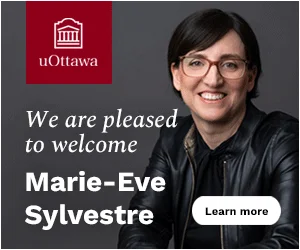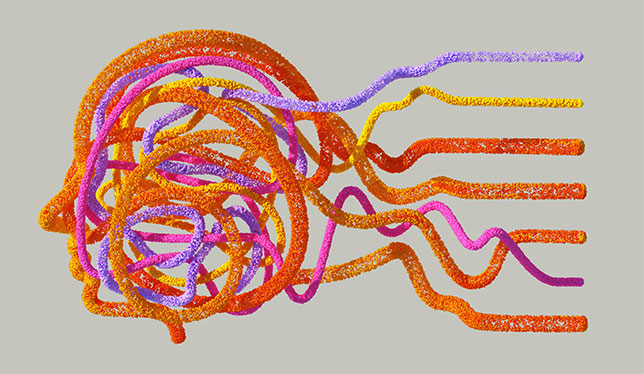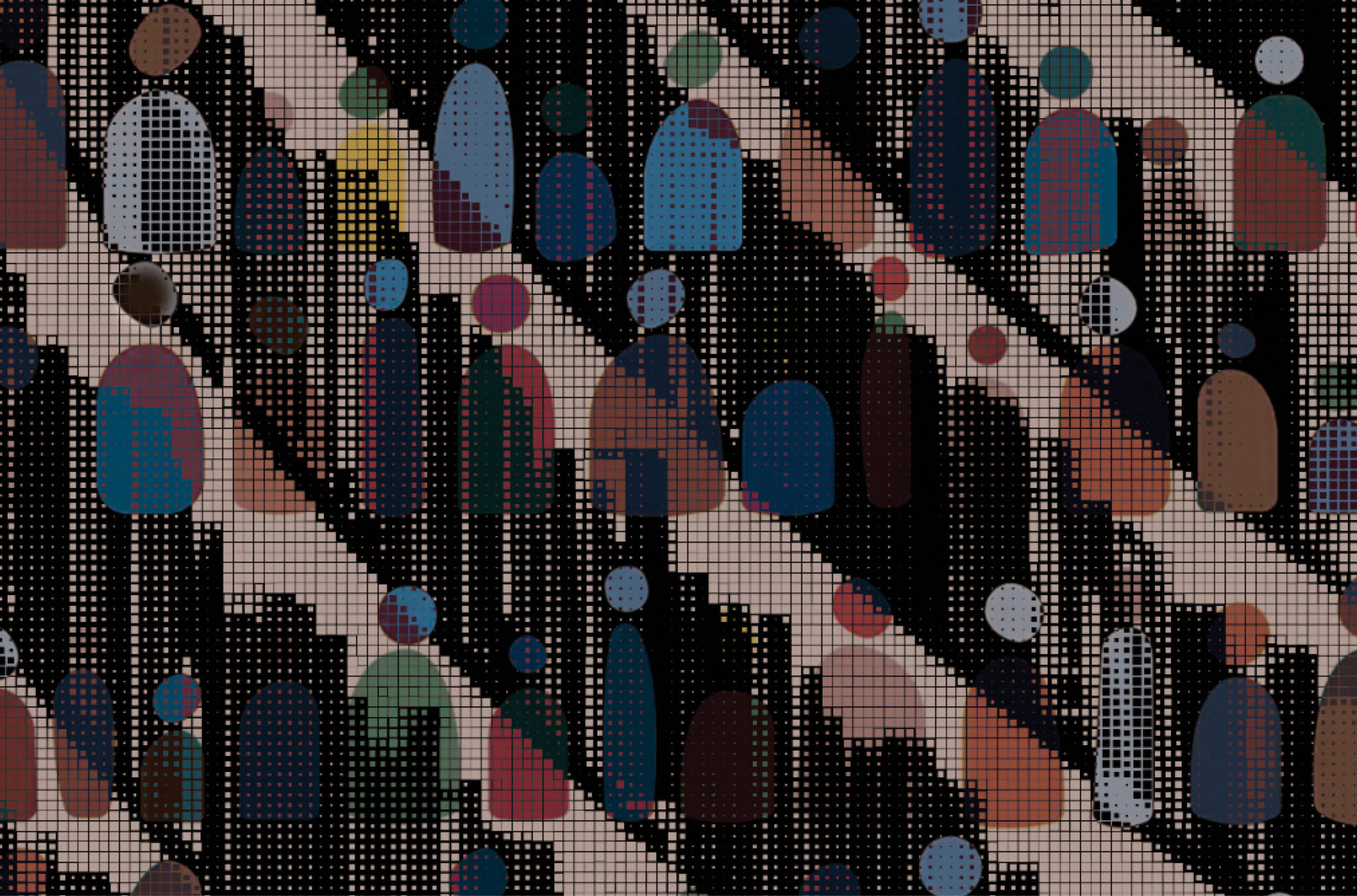It is time to make teaching-stream faculty count
A survey of primarily teaching math faculty reveals the need for standardization to strengthen and support these integral contributors to undergraduate education.

Over many years and across the world, the proportion of full-time, tenure-track faculty in academia has declined. This trend has been present in Canada, too, with universities relying on a precarious workforce (non-permanent, part-time, casual, contract, temporary-type employment) to fill in ever-increasing demands for classroom instruction.
A 2018 study by the Council of Ontario Universities states that “Part-time instructors teach 45 per cent of all students, focusing particularly on the undergraduate level – where they teach 46 per cent of students and 50 per cent of courses.” In discussing the situation, the authors try hard to convince us that many part-time instructors are “very likely unqualified for a tenure-stream appointment” and that “a minority of part-time instructors (nine per cent to 23 per cent) would potentially fit the common public perception of part-time instructors seeking to make a full-time academic career.” This narrow data interpretation cannot hide the fact that the tenure-track professoriate meets, at best, one half of the current university teaching demands.
Given that sessional instructors are currently paid between $5,000 and $10,000 per course (according to CAUT data) we wonder if there is any other occupation in Canada where a group of highly educated individuals would be expected to provide a first-class product for a salary that would keep them around the poverty line and with no job security whatsoever. This absurd, unfair, and unsustainable situation has led to a gradual but steady acceptance of the fact that the creation of continuous teaching-stream faculty positions would bring multiple benefits to the entire university teaching and learning practice.
Tenure-track research faculty have often challenged the idea of establishing teaching-stream faculty. Still, there is a feeling that the tide has turned and that the teaching-stream faculty are becoming a well-established reality throughout the Canadian academic landscape. What can be done to ensure that this group is well-supported in their work and embraced with full recognition and respect?
Snapshot of the teaching-stream
First Year Math & Stats in Canada (FYMSiC) is a grassroots postsecondary teaching community initiated in 2017 to provide an opportunity for practitioners to share their experiences and coordinate their efforts as they meet the challenge of teaching mathematics in a fast-changing academic world. A diverse community, its core is comprised of teaching-stream faculty, both continuing and part-time, and in May 2022 the FYMSiC’s online conference was devoted to the discussion about the teaching-stream faculty ranks across Canada.
In preparation for the conference, 12 members of the FYMSiC community were invited to complete a short survey about the status of the teaching-stream faculty ranks at their institutions. These members represented 12 universities from six provinces. Eight had a collective agreement between the university and the local faculty association that included teaching-stream faculty; one was in the process of negotiating such an agreement; one opted for using the term “academic teaching staff” rather than “teaching faculty;” and two schools did not have any kind of recognized continuous teaching-stream faculty. In general, the responses by our colleagues from institutions with the established teaching streams indicated a variety of approaches when defining the teaching-stream faculty ranks, their workload, job expectations, including the level of courses taught, and so on.
Here is a summary of what was found:
Ranks
All universities surveyed had three levels for teaching-stream faculty, mimicking the ranks of tenure-track faculty. The most common approach to naming these ranks was to use the traditional ranking (assistant professor – associate professor – professor) and add or insert “of teaching” or “teaching” or “teaching stream.”
Tenure
There are different approaches towards granting permanent employment status. Some universities do not have that as an option, some treat the highest rank as tenured, and some mirror the research-stream pattern and award tenure at the second rank level. Sometimes the term “tenured” is avoided, even though the position is permanent.
Workload split
Five respondents had a workload split of 80 per cent teaching/20 per cent service. One had a 85/15 split for teaching/service. Two had a 70/20 split of teaching/service, plus 10 per cent for educational leadership and scholarship.
Teaching
The teaching load amounts to teaching six one-semester courses per year or fewer, in which case the remaining load consists of performing “equivalent” duties such as workshop or math help centre coordination; coordination of multi-section courses; major administrative duties; or supervision of graduate students or undergraduate research projects. Concerning the range of mathematics courses taught, the consensus was that “this is not set in stone.” Teaching-stream faculty generally teach first- and second-year courses vs. upper-division or graduate courses.
Service
This includes serving on various institutional and/or professional committees and bodies, as well as serving the community at large. Such an involvement may range from the departmental level to the national level. In addition, it is common to see the members of the teaching-stream faculty as leads on various outreach and professional development initiatives.
Educational leadership and scholarship
This component is not always precisely defined, nor is it consistent across universities. It may be left vague by design, to keep terms open and flexible when interpreted for a specific teaching-stream position. One respondent commented that “educational leadership” could be done through non-scholarly networks such as “administrative work at and beyond the university.” Another wrote that “publishing peer-reviewed publications is not required.” Still another commented that “just attending workshops/conferences do show that one is mindful of improving their teaching and is looked upon favourably.”
For example, the University of British Columbia collective agreement defines educational leadership as, “an activity taken at UBC and elsewhere to advance innovation in teaching and learning with impact beyond one’s classroom.” This document provides examples of activities that count as active engagement in the scholarship of teaching and learning: pedagogical innovation and other initiatives that extend beyond the member’s classroom; formal educational leadership responsibilities; organization of and contributions to conferences; and contributions to the theory and practice of teaching and learning, including publications.
Promotion process
Not all universities covered by our survey had a well-established promotion process. One of the survey respondents wrote: “This has been somewhat ad hoc. This issue is currently being addressed.”
A call to action
It is our strong conviction that the significance of the teaching-stream faculty as an integral part of the Canadian postsecondary education system will continue to grow for educational and economical reasons. These faculty are innovative, dedicated to their teaching, and are continuously exploring and introducing new teaching techniques. As well, having a group of academics whose primary task is teaching will continue to improve students’ learning experience, better meet the learning needs of an already diverse student population, and increase levels of retention.
Canadian universities should therefore create a respectful and supportive environment for the teaching faculty and offer full-time, permanent employment while allowing for a small number of emergency short-term contractual positions. By implementing a well-defined set of expectations and a fair and meaningful promotion process, all teaching-stream faculty should be encouraged to pursue their academic and personal growth for the benefit of their own well-being, their students’ learning, and their institutions’ success. Consequently, the teaching-stream faculty should be both encouraged to, and awarded for, their contributions to educational leadership and scholarship.
With this in mind, we invite the entire academic community in Canada, including the research-stream faculty, administration, and the teaching-stream faculty to work together to further strengthen the position of the teaching-stream faculty. Hence, our call to action:
- Standardize the teaching-stream academic ranks across Canadian universities to assistant professor of teaching, associate professor of teaching, and professor of teaching, or equivalent ranks that follow the established ranks for research faculty.
- For most teaching stream faculty, standardize the workload split to 70 per cent teaching, 20 per cent service, and 10 per cent scholarship. Consider alternatives in special cases.
- Standardize tenure and promotion processes, to mirror the processes for research-stream faculty.
By mirroring the research-stream faculty ranks, the two ranks – research and teaching – would be both distinguished and better balanced. This would allow for easier mobility across Canadian academic institutions. In addition, it might encourage more young academics to consider joining teaching-stream faculty, thus, through competition, further improving its quality.
Andrijana Burazin is an assistant professor, teaching stream (math), at the University of Toronto, Mississauga. Lauren DeDieu is an associate professor (teaching) in the department of mathematics and statistics at the University of Calgary. Veselin Jungić is a teaching professor in the department of mathematics at Simon Fraser University. Miroslav Lovrić is a professor in the department of mathematics and statistics at McMaster University.
Featured Jobs
- Veterinary Medicine - Faculty Position (Large Animal Internal Medicine) University of Saskatchewan
- Business – Lecturer or Assistant Professor, 2-year term (Strategic Management) McMaster University
- Computer Science - Assistant Professor (Cybersecurity)University of Regina
- Computer Science - Assistant Professor (Master of Data Analytics)University of Niagara Falls Canada
- Psychology - Assistant Professor (Speech-Language Pathology)University of Victoria















Post a comment
University Affairs moderates all comments according to the following guidelines. If approved, comments generally appear within one business day. We may republish particularly insightful remarks in our print edition or elsewhere.
4 Comments
Dear colleagues – thank you for raising awareness about an issue we all know about, but rarely talk about. Teaching positions allow universities to teach more students, for less money. Period. While they were no doubt originally seen as a short-term solution to the declining provincial funding problem, teaching positions are now a regular part of the institutional landscape. However, as you highlight so well in your piece, they continue to be marginalized and rarely seen as equal members of the university community. I invite my teaching colleagues to find ways to support each other and to take every opportunity they can to celebrate the important work that we do at post-secondary institutions across the country.
<> Bravo, dear colleagues, please accept my compliments on how you formulated your query in the last question. My personal example may demonstrate my take on this important issue I have lived unhappily with for so many years throughout my career.
I have been teaching on a campus of a university in the province of Ontario for the past thirty-five (35) years: five (5) years at the beginning of my career as a Sessional Lecturer (now Contract Instructor term is used on our campus) and thirty (30) years as a full-time Instructor. I have received my PhD degree from a well-known University outside Canada and got a Canadian PhD equivalent from UFT at the age of 26. I was at the top of my class in a PhD program and the first to defend my thesis (not to mention my graduating from high school and BA, MA university programs with 100% averages). I have consistently had the highest teaching evaluations during my entire university career.
I was hired to an Instructor II position in 1992. After 30 years in the Instructor’s rank, I managed to move to Instructor III position. And although there were no valid reasons refusing my move accross the ranks, the department prevented this move from happening. As a matter of fact, this move did not happen for any Instructor in my unit and we all are doomed to remain eternal instructors.
I would like to add that I am an author of five (5) textbooks, actively used during many years in our courses. I have put my heart and soul into my teaching and my work on campus. In the frankest assessment of my career path, I regret to admit that unfortunately I did not get that <> you rightfully advocate for, on my own campus, where Instructors (in reality, teaching faculty) are neither considered nor officially called Faculty.
I am preparing for my retirement in a couple of years with a lost hope of changing this unfair, pretentious, humiliating and condescending attitude toward the Instructor rank on my campus. The answer to the question as to when my university will show me some respect in renaming my rank to Teaching Assistant Professor, Teaching Associate Prof. and Teaching Full Professor while addressing me as Faculty, remains untold. Sadly, sadly so for me and many of my colleagues in the Instructor rank.
I am a PhD candidate, and I just taught a second-year mechanical engineering course as a Contract Instructor at a university in Ontario. I’ve been tracking my hours and I’ve made almost $7 less per hour (as a CI) than what I would have made as a TA. I made $7500 (before taxes) for the semester.
Luckily, I did it for the experience, not the pay, but it’s really opened my eyes to the exploitation happening to CIs around the country. It’s unfortunate that Contract Instructors and teaching staff have been treated as disposable, when they are (as the numbers in the article show) so essential to the businesses (ie. universities) that exploit them.
Thank you for this important article.
Hello.
concerning your opinion on
“It is time to make teaching-stream faculty count”.
To start with I sympathize with all those who are on contract and struggling to get permanent jobs/promotions through the stream of teaching. I am well aware of it as a faculty association member. I remember every year during contract negotiations we will talk about this point and take it to the negotiating table with the university. In addition, I do remember the CBC through Michael Enright discussed this topic eloquently in his program Sunday morning magazine, so you all have my support. What I am talking here is about promotion to the rank of professor through the teaching stream.
This concept is not new at least as I know in Western University medical school. I remember that between the years 1999-2010, the dean at that time sent a memo to the chairs which was sent to the faculty indicating that the teaching stream will count in promotion and tenure. The idea is great, especially for those who teach 70 % of the time. The teachers whom teaching is 70% have no choice, not because they want to teach 70 % but because the number of professors teaching these many courses in that department in one subject is limited, furthermore the courses were extensive and varied e.g., they have to teach gross anatomy to, meds, dents, physiotherapists, communication disorders, kinesiologists, nurses, art students and graduate orthodontics.
Those “70% teaching professors ” have to teach constantly and keep that equation of service and research also going in the same time. On the other hand those who do not teach at all or teach 3 or 4 hours only per year and spend the rest of the time researching have an advantage over professors who teach of course this is unfair in any situation.
Unfortunately, the concept of promotion through teaching is good on paper only. In my department of anatomy all these years till 2020 only 2 people were promoted to the full professor through this concept of teaching. These two received teaching awards of the highest award I think was 3M .for the record only a few people in Canada receive that award .other faculty members who were like me were nominated for OCUFA awards(the Oscar of Teaching twice ) or had teaching evaluated as 100% and one other national teaching awards and a faculty award and yearly obtaining highest teaching evaluation award for approximately 19 years .more over I did research and obtained grants and supervised graduate students, I was never given that chance. in my opinion, this concept of promotion through teaching has a cynical part. in my opinion, it helps to be family friendly with the chairman and he visits you and you visit him a subject not many of us are good at and comfortable with and other reasons like race for example I will discuss this in the future.
I do remember at one time one of a certain dean’s secretaries who manages promotion and tenure papers told me the promotion is by the quantity of publication, not quality, sad but true.
so, although I wish your opinion is accepted in Canadian faculties there is a long way in Canadian universities to accept the concept that teaching excellence can lead to your promotion. This needs a radical change in university thinking and departmental attitudes and that the status co is unacceptable. The way to do it is to let faculty members teaching 70% sit on the promotion and tenure committee. Here is the problem most of the people in my department on the promotion ad tenure are the same people same colour almost every year they tend to vote for those who look like them or have the attitude of you scratch my back I scratch yours. The chairman of the department argued once with me saying that they were elected democratically, and he can’t do anything. I kept telling him that these are the same G… d….m people for the last ten years !!!so you can’t break that glass ceiling. in my 50 years of teaching, I have never seen a minority departmental member on promotion and tenure in my department. The answer should come from the faculty association mandate in negotiations by the University demanding that departments must have minorities on these promotions and tenure committees, as well as those who are in the teaching stream. similar to what the supreme court Of the USA required a quota for minorities in admission to the university. I hope this happens but I am pessimistic
Dr.K.A.Galil.Professor of Medicine and Professor of Dentistry
DDS.,D.Oral & Maxillofacial Surgery active emeritus
,PH.D,FAGD.,FADI.,Cert.Periodontist(Uof Michigan) (Royal College Dent Surg.Ont)
Departments of Periodontics, Orthodontics and Clinical Anatomy
Schulich School Of Medicine and Dentistry.
University of Western Ontario, London, Ontario.
http://www.drgalil.ca